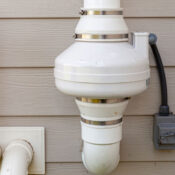Some 20 years ago, a startup company approached me about new concepts that might improve healthcare delivery.
I suggested that much could be done remotely by computer, particularly for patients with reduced mobility or those living in remote areas in the U.S. or in foreign countries with limited medical resources. I polled a group of 50 medical colleagues and asked if they would be available to participate in delivering remote care, and the vast majority agreed. However, the company did a market survey and found that this approach to medicine was not financially viable. There might also be a problem getting medical licenses in multiple states and countries. They said no thanks.
It was an idea ahead of its time.
Obviously, things have changed in the interim, particularly since COVID, and now many patients are able to sit down with a computer and interact with a healthcare provider.
Actually, a form of telemedicine has been used for many years by patients with implanted devices, such as pacemakers, that routinely transmit device status to a healthcare practitioner.
What began as a patchwork solution to facilitate medical care has evolved into a permanent fixture of modern medicine, a regular part of how many Americans interact with healthcare workers. Many patients enjoy this new approach that overcomes transportation issues and eliminates time wasted in the waiting room — sitting next to coughing, sneezing patients. In addition to facilitating access to a physician, telemedicine allows for quicker appointments, convenient follow-ups, and reduced costs.
For some patients, telemedicine works well. For example, a psychiatrist can listen just as effectively through a video feed as with the patient in the room. Many follow-up visits for patients to learn test results and what they mean can be done remotely.
One of the most important applications of telemedicine is the ability to frequently and remotely evaluate a patient using wearable or implanted sensors that measure, for instance, heart rate, breathing, and blood pressure, and transmit that information to a healthcare worker. Sudden changes can be caught immediately and appropriate treatment instituted. I always worried what might happen to a patient in the interval between visits, and body-worn sensors are a potential solution for monitoring the patient during that time.
I am from the old school of medicine that emphasized a “hands on” approach as a significant part of being a good doctor. In 1925, in a lecture to Harvard Medical School students, Francis Peabody stated, “the care of the patient is in caring for the patient.” I don’t think that can be easily done remotely by computer. Sitting beside a patient and holding their hand, performing a physical examination carefully and respectfully, interpreting their body language, as well as expressing the body language of the physician, are critical components that build trust between patient and doctor. That trust can affect a patient’s well-being.
In addition, clues found by a physical exam may not be visible through a camera, such as a small tremor or faint hesitation in recalling a word. Subtle skin color changes may not show up well on video. Also, tests that require the patient’s presence — blood drawing, imaging studies, ECGs — cannot be done remotely.
Telemedicine is not for every patient or for every visit. Older patients in particular may not be capable of using the necessary electronics because they may lack access to or familiarity with necessary technology. However, used wisely, it can expand healthcare to many patients. The key is to find the appropriate balance between in-person and remote visits. The latter is definitely a part of the future but should not replace a “hands on” evaluation when indicated.
Don’t miss “Your Health Checkup” by Dr. Douglas Zipes for updates on medical breakthroughs and advice on healthy living at saturdayeveningpost.com/checkup.
This article is featured in the September/October 2025 issue of The Saturday Evening Post. Subscribe to the magazine for more art, inspiring stories, fiction, humor, and features from our archives.
Become a Saturday Evening Post member and enjoy unlimited access. Subscribe now




Comments
In rural areas where we have internet connectivity and fewer local physicians and nurse practitioners Telemedicine has served a vital need. Its use will grow even more as time progresses. I have no problem using it.